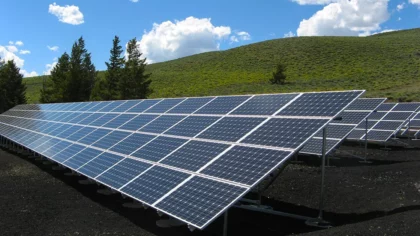The Heavy Industry Market Report 2025 presents a detailed analysis of firmographic growth, innovation dynamics, and capital investment. It examines company activity across emerging and mature industrial hubs, tracks workforce expansion, and assesses intellectual property (IP) trends to highlight the sector’s technological advancement.
Additionally, the report outlines major investor participation and shows strategic mergers, acquisitions, and funding rounds that assist industrial transformation. It also explores high-impact trends such as electrification, carbon capture and storage (CCS), and industrial IoT (IIoT).
Further, it features five emerging startups working toward decarbonization, digitalization, and circular resource use. These indicators offer business leaders, strategists, and policymakers an understanding of emerging innovation and the evolving industrial sector.
Executive Summary: Heavy Industry Outlook 2025
- Industry Growth Overview: The heavy industry sector is projected to grow at an annual rate of 18.22%, with the heavy construction equipment market expected to reach USD 224.49 billion by 2025.
- Manpower & Employment Growth: The sector supports a global workforce of 425 700 employees, with a yearly increase of 17 700 new hires.
- Patents & Grants: About 330 applicants filed for more than 340 patents, which shows the R&D engagement in the industry. Additionally, 334 companies received grants. Patent activity grew by 17.30% over the past year. China and the UK emerged as key patent hubs, with China receiving 224 patents and the UK receiving 37.
- Global Footprint: The USA, China, Australia, India, and Canada lead in country-level innovation, while cities such as London, Perth, Brisbane, Zhengzhou, and Sydney serve as major industrial hotspots. These hubs attract capital, talent, and R&D investment, driving the next phase of industrial transformation.
- Investment Landscape: The sector closed about 660+ funding rounds with an average deal value of USD 95.7 million. More than 987 investors funded over 205 companies.
- Top Investors: The sector drew over USD 8.11 billion in total investments. The European Investment Bank leads with USD 1.5 billion in two companies. Other major investors include Souriau SAS, Societe Generale, and Kohlberg Kravis Roberts, among others.
- Startup Ecosystem: Five innovative startups that showcase the sector’s global reach and entrepreneurial direction include Sea-Quester (offshore carbon sequestration), Anferra (steel waste recycling), BioMetallum (microbial mining), VIRECA (carbon-to-syngas conversion), and Mechanima (structural health monitoring).
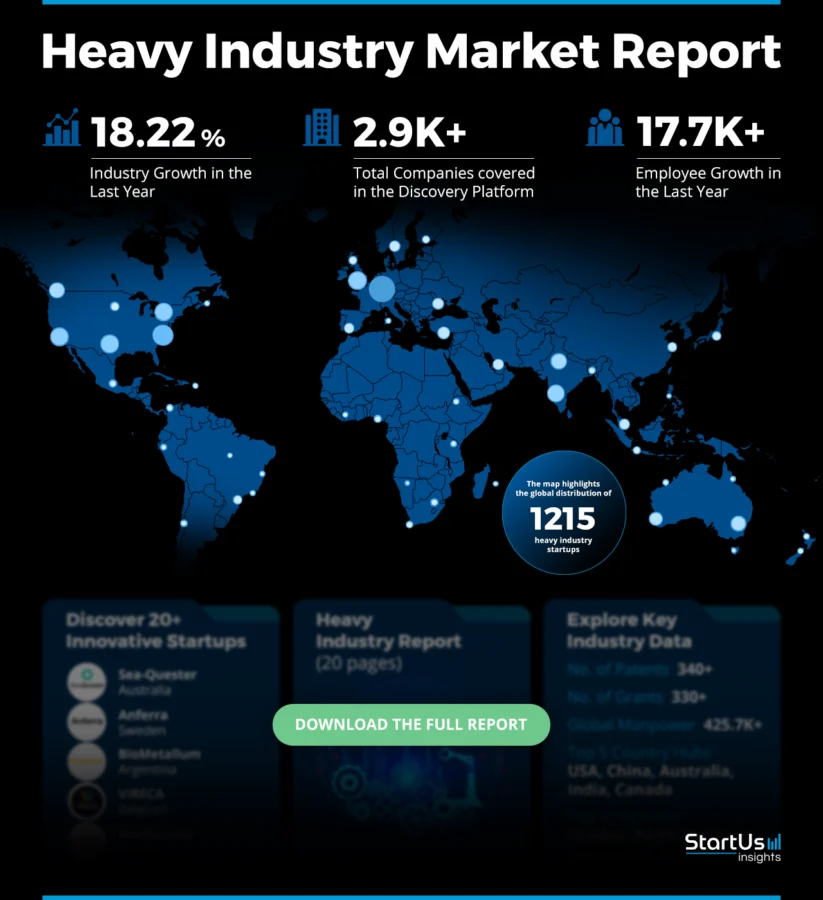
Methodology: How we created this Heavy Industry Report
This report is based on proprietary data from our AI-powered StartUs Insights Discovery Platform, which tracks 7 million global companies, 20K+ technologies and trends as well as 150M patents, news articles, and market reports. This data includes detailed firmographic insights into approximately 7 million startups, scaleups, and tech companies. Leveraging this exhaustive database, we provide actionable insights for startup scouting, trend discovery, and technology landscaping.
For this report, we focused on the evolution of heavy industry over the past 5 years, utilizing our platform’s trend intelligence feature. Key data points analyzed include:
- Total Companies working in the sector
- News Coverage and Annual Growth
- Market Maturity and Patents
- Global Search Volume & Growth
- Funding Activity and Top Countries
- Subtrends within heavy industry
Our data is refreshed regularly, enabling trend comparisons for deeper insights into their relative impact and importance.
Additionally, we reviewed trusted external resources to supplement our findings with broader market data and predictions, ensuring a reliable and comprehensive overview of the heavy industry market.
What Data is used to create this Heavy Industry Market Report?
Based on data provided by the StartUs Insights Discovery Platform, we observe that the heavy industry market stands out in the following categories relative to the 20K+ technologies and trends we track.
These categories provide a comprehensive overview of the market’s key metrics and inform the future direction of the market.
- News Coverage & Publications: More than 2800 publications related to heavy industry technologies and advancements appeared over the last year.
- Funding Rounds: A total of 669 funding rounds have been recorded in our database.
- Manpower: The sector employs a global workforce of 425 700 people, with an annual addition of approximately 17 700 new hires.
- Patents: The industry holds a strong position in innovation, with 346 patents filed.
- Grants: The sector secured 334 grants.
- Yearly Global Search Growth: With a 9.20% increase in global search interest in the last year, heavy industry gains traction in public and investor awareness alike.
Explore the Data-driven Heavy Industry Market Report for 2025
The heatmap offers a visual snapshot of the heavy industry’s evolution and global hotspots. With 1215 startups and a total of 2921 companies tracked, the sector witnessed an 18.22% growth over the last year, which showcases its innovation pipeline.
By 2025, the intellectual property landscape will remain strong, with 346 patents and 334 grants awarded. It underscores proprietary technology development and government-backed innovation.
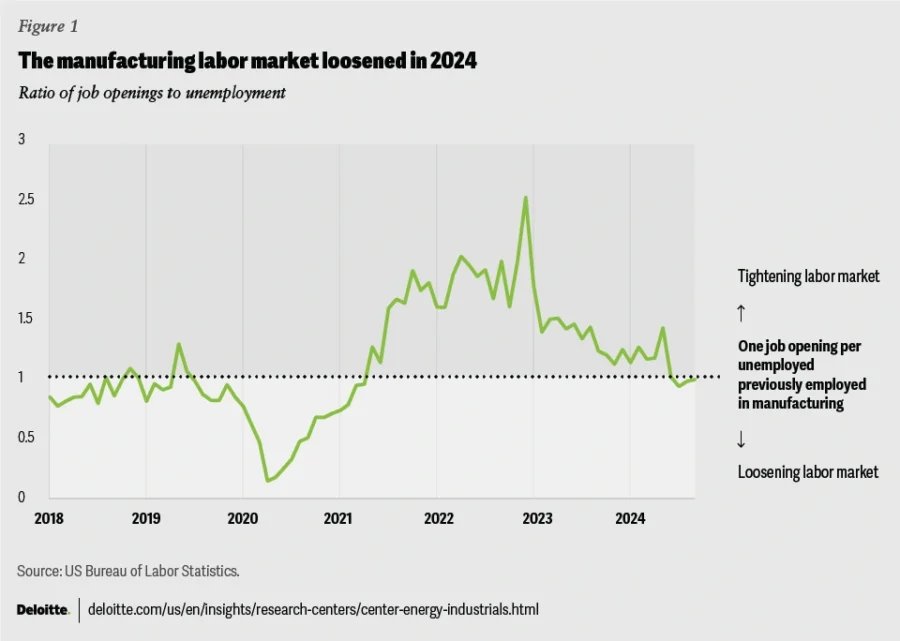
Credit: Deloitte
Besides, the heavy construction and civil engineering industry in New Zealand alone employed approximately 41 900 people in 2024.
In the United States, over USD 31 billion was invested in clean-technology manufacturing facilities that are projected to generate nearly 27 000 new jobs. Additionally, US manufacturing construction spending hit a record USD 238 billion in June 2024, which highlighted the strong potential for further job creation and increased investment in equipment and IP. The manufacturing sector’s employment rate is projected to reach 2.19% in 2025.
Overall, the heavy industry includes a global workforce of 425 700 employees, alongside an employee growth surge of 17 700 in just one year. This points to rapid industrial scaling and talent absorption.
Geographically, innovation is concentrated in several key hubs. The USA, China, Australia, India, and Canada emerge as the top five countries leading this charge. On the city level, London, Perth, Brisbane, Zhengzhou, and Sydney stand out as centers of heavy industry activity that attract capital, talent, and R&D investment.
In 2024, China and the USA together contribute nearly half of the global manufacturing output, followed by Japan, Germany, and India.
A Snapshot of the Global Heavy Industry Market
The heavy industry continues to demonstrate strong momentum by recording an annual growth rate of 18.22%. The market is expected to reach USD 224.49 billion in 2025 and is expected to rise to USD 286.51 billion by 2030 with a 5% compound annual growth rate (CAGR) over the 2025–2030 period.
Further, the industrial machinery market is projected to grow from USD 0.81 trillion in 2025 to USD 1.2 trillion by 2030, with a CAGR of 8.1% over the 2025–2030 period.
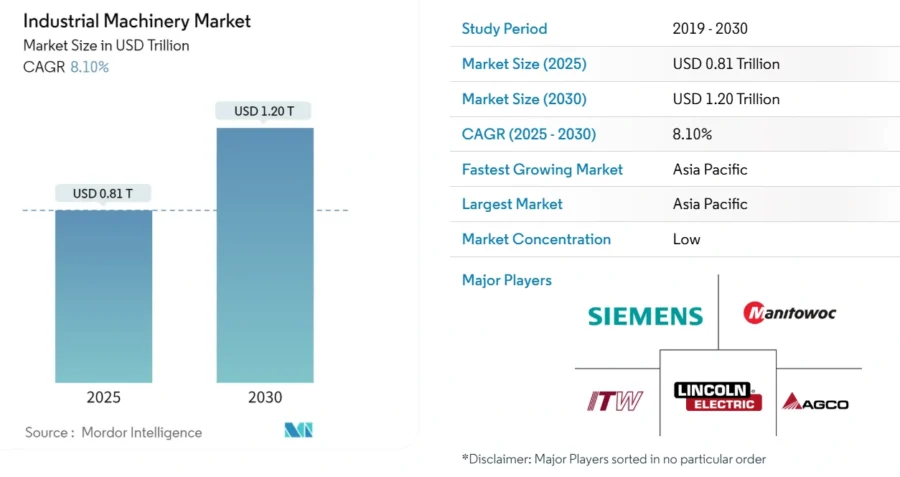
Credit: Mordor Intelligence
The global heavy construction equipment market was valued at USD 209.21 billion in 2024 and is expected to climb to USD 219.32 billion in 2025. It projects to approach USD 334.14 billion by 2034 and represent a 4.79% CAGR over the 2025-2034 period.
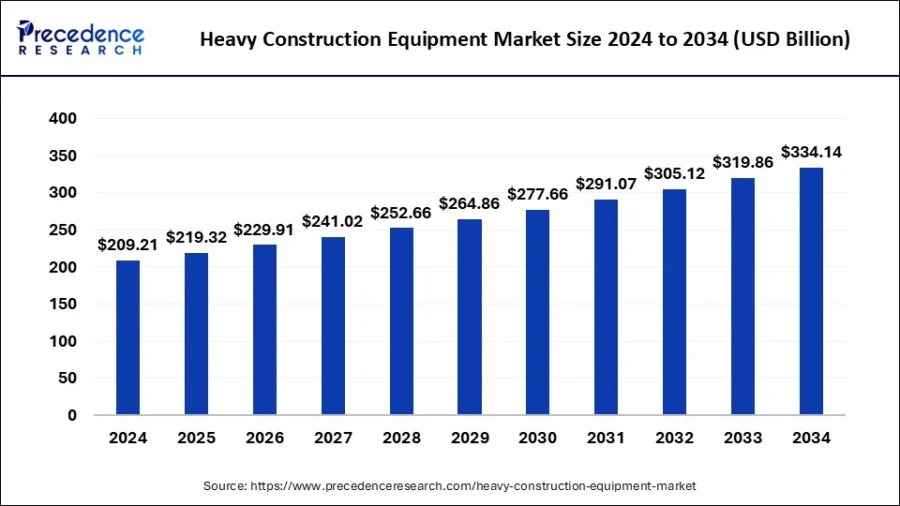
Credit: Precedence Research
With 1215 startups currently active, the heavy industry reflects both maturity and fresh innovation. Of these, 70 are early-stage ventures that signal a steady influx of new ideas and entrepreneurial energy. Meanwhile, 108 companies reached the merger and acquisition (M&A) stage. This showcases a market with consolidation activity and strategic investments.
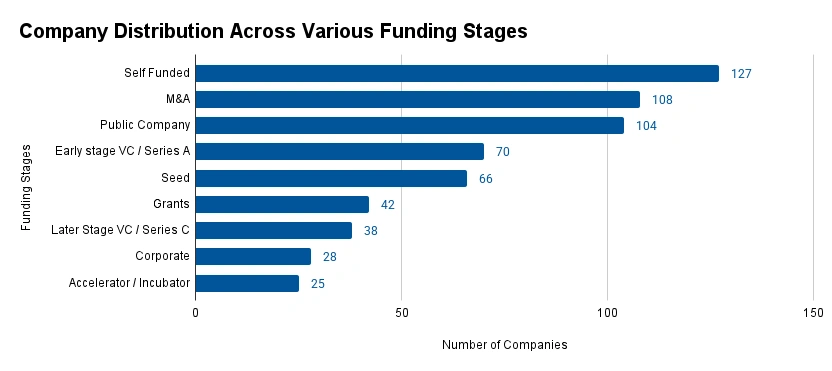
However, 346 patents have been filed by 332 unique applicants to reflect a wide base of R&D contributors rather than a concentration of efforts in a few players over the past year. Patent activity also grew by 17.30% in the last year. China leads the global patent filings with 224, followed by the UK with 37.
Explore the Funding Landscape of the Heavy Industry Market
The capital segment in heavy industry reflects a maturing and increasingly attractive market for investors worldwide.
In 2022, Beijing allocated roughly USD 1 trillion for new building projects. This includes around USD 116 billion for canals, dams, and reservoirs.
Further, global spending on the IIoT is also expected to reach USD 500 billion in 2025.
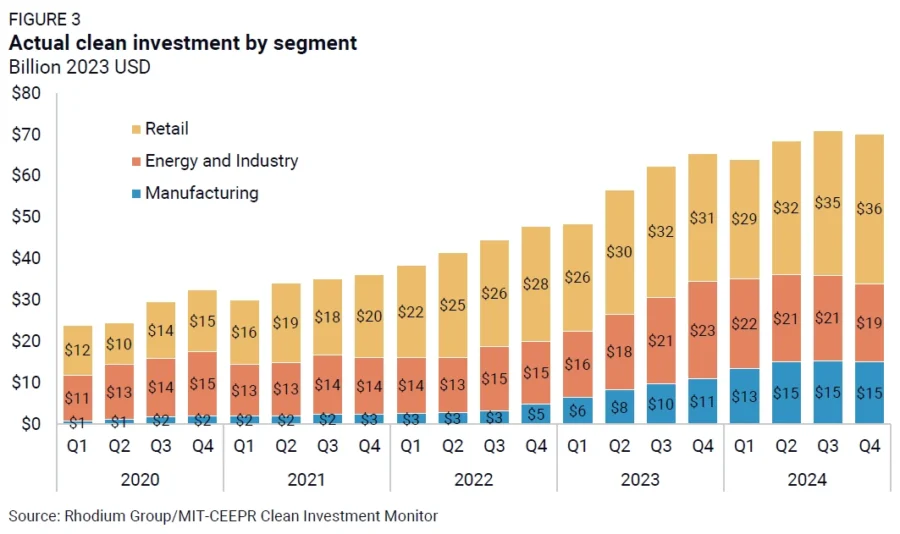
Credit: Clean Investment Monitor
Moreover, heavy industry continues to play a key role in clean manufacturing, with the electric vehicle (EV) supply chain leading investment activity. In quarter 4 2024, EV-related manufacturing that includes spanning critical minerals, batteries, assembly, and charging, accounted for USD 14 billion, or 93% of the total USD 15 billion invested.
Battery manufacturing alone saw USD 12 billion in funding, up 91% year-over-year. While solar manufacturing declined 24% from the previous quarter to USD 935 million, full-year investment still rose 8% from 2023.
The heavy industry received an average investment value of USD 95.7 million per funding round. To date, over 669 funding rounds have been successfully closed to support growth across early-stage and mature companies. It includes more than 987 investors actively investing across more than 205 companies.
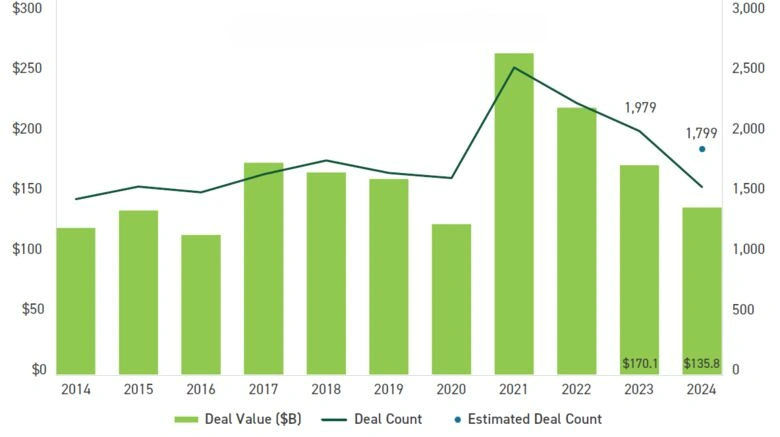
Credit: Cherry Bekaert
As part of the broader industrials sector, the US saw a surge in private equity activity, with approximately 1800 deals totaling USD 135 billion last year. The sector accounted for 21.2% of total deal activity, slightly down from 24.5% in 2023.
Who is Investing in the Heavy Industry Market?
The heavy industries attracted more than USD 8 billion in combined investments from leading global financial institutions and private equity firms.
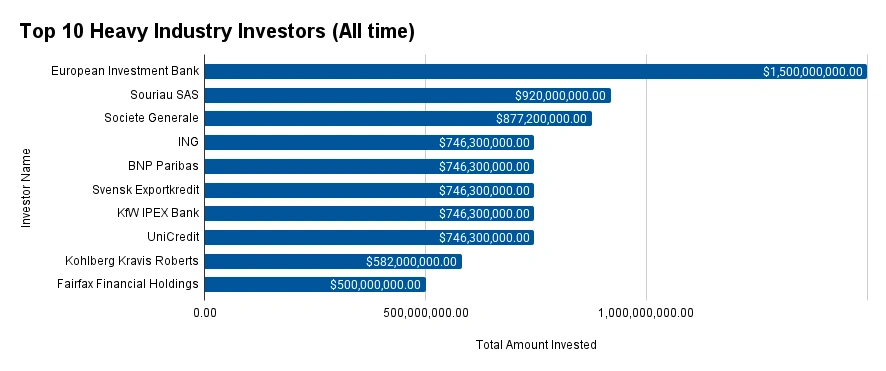
- European Investment Bank (EIB) backed 2 companies, investing a total of USD 1.5 billion. It also collaborated with Societe Generale to mobilize up to USD 8.72 billion in wind industry investments.
- Souriau SAS invested USD 920 million in at least 1 company.
- Societe Generale funded 3 companies with a combined investment of USD 877.2 million.
- ING committed USD 746.3 million to at least a single company investment.
- BNP Paribas contributed USD 746.3 million toward at least one portfolio company.
- Svensk Exportkredit allocated USD 746.3 million to at least one firm.
- KfW IPEX Bank provided USD 746.3 million in funding to at least one company.
- UniCredit invested USD 746.3 million in at least 1 company.
- Kohlberg Kravis Roberts (KKR) committed USD 582 million to at least 1 company. It also acquired a renewable energy firm Encavis, for USD 2.92 billion. The company entered a USD 50 billion partnership with Energy Capital Partners for data center and power infrastructure development.
- Fairfax Financial Holdings followed closely, investing USD 500 million into 1 company, reinforcing its strategic focus on industrial ventures.
Top Heavy Industry Innovations & Trends
Discover the emerging trends in the heavy industry market along with their firmographic details:
- Electrification: Electrification advances the heavy industry sector, with 7636 companies assisting this change. An annual growth rate of 10.41% underscores the momentum as industries pursue low-carbon energy solutions at scale. It supports a workforce of 1.3 million employees with an addition of 80 800 new roles in the past year.
- Carbon Capture & Storage (CCS): The domain emerged as a pathway for decarbonizing emissions-intensive sectors with an annual growth rate of 12.85%. It shows the participation of 1782 companies with a growing workforce of 39 0000+ employees, 30 300 of whom joined within the last year.
- Industrial IoT: The integration of IIoT supports greater operational efficiency, predictive maintenance, and data-driven decision-making in the heavy industries. Despite its size and influence, it recorded a slight decline of 0.01% in growth. The domain currently includes about 32 626 companies and a workforce of 3.1 million. The sector also saw 151 400 new jobs added over the past year.
5 Top Examples from 1200+ Innovative Heavy Industry Startups
The five innovative startups showcased below are picked based on data including the trend they operate within and their relevance, founding year, funding status, and more. Book a demo to find promising startups, emerging trends, or industry data specific to your company’s needs and objectives.
Sea-Quester provides Offshore Carbon Sequestration
Australian startup Sea-Quester created a mobile offshore system for storing carbon dioxide (CO2) beneath the seabed, using two components: the Pivotree and the Carbon Harvester. The Pivotree serves as both a mooring unit and a subsea injection point. It anchors the vessel and enables controlled injection of CO₂ into deep geological formations. The Carbon Harvester, a handysize vessel, manages the treatment, compression, storage, and delivery of CO₂ to the injection site.
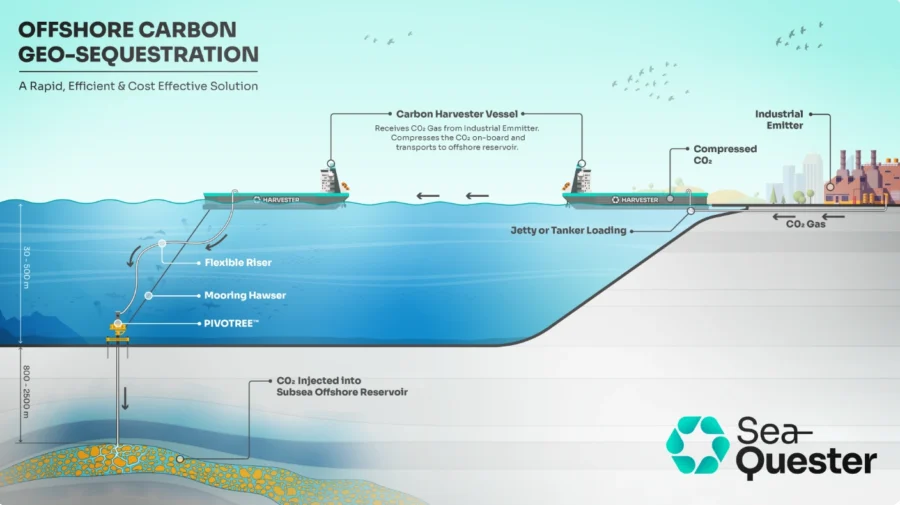
This integrated system removes the need for permanent offshore platforms, pipelines, or complex infrastructure. Thus, it makes carbon sequestration faster to deploy, less disruptive to the environment, and more cost-efficient for hard-to-abate sectors like steel, cement, and petrochemicals.
Anferra advances Steel Waste Recycling
Swedish startup Anferra develops a proprietary recycling method that converts hazardous steel grinding swarf into useful materials for water treatment and clean energy. This swarf consists of hard-to-process low-alloy steel particles.
The startup’s method extracts iron from this waste and turns it into ferric chloride that is used to treat drinking water. Additionally, the process produces hydrogen gas that assists in generating electricity or fossil-free steelmaking. It also recovers materials like molybdenum, chromium, and leftover cutting oils and abrasives to make stainless steel.
BioMetallum builds Microbial Mining Tech
Argentine startup BioMetallum builds Lithium BioX, a biotechnology-based method for eco-friendly lithium and metal extraction from brine using microorganisms.
The process returns brine to its original source to conserve freshwater, reduces land use, eliminates toxic chemicals, and cuts waste. It assists in meeting the demand driven by electric vehicles and other clean energy technologies.
VIRECA simplfies Carbon to Syngas Conversion
Belgian startup VIRECA uses solid oxide electrolyzer cell (SOEC) and solid oxide fuel cell (SOFC) technologies to electrify industrial chemical reactions and convert CO2 into syngas.
The SOECs use high temperatures to split water vapor into hydrogen and reduce carbon dioxide into carbon monoxide. These two gases undergo co-electrolysis to produce syngas. It serves as a raw material for making chemicals like methanol and synthetic fuels.
Further, the SOFCs conduct oxygen ions that utilize fuels such as hydrogen, carbon monoxide, methanol, ammonia, and methane. Thus, it electrifies the steel and chemical industries by converting CO2 waste into clean feedstocks.
Mechanima offers Health Monitoring Software
Turkish startup Mechanima develops Inversense, a structural health monitoring software. It enables full-field, real-time assessment of engineering structures using digital twin technology. The software processes strain data from discrete sensors placed on a structure’s surface to generate continuous 3D insights like deformation, strain, stress, and crack progression throughout the structure’s volume.
Moreover, Inversense reconstructs the structural condition without knowledge of applied loads, using only geometry and material inputs. It supports materials, including metals and composites, and adapts to industries like aerospace, maritime, construction, and automotive.
Additionally, the software provides real-time visualizations and automated cloud-based reports for continuous remote monitoring and early damage detection. It converts discrete sensor signals into structural intelligence to extend asset life cycles, reduce maintenance risks, and adopt digital twin-enabled decision-making.
Gain Comprehensive Insights into Heavy Industry Trends, Startups, and Technologies
The Heavy Industry Market Report 2025 highlights a sector undergoing evolution with innovation activity, strategic capital inflows, and a broadening pool of talent. As decarbonization and digital integration become central to industrial competitiveness, electrification, CCS, and structural health monitoring are emerging as trends.
With increasing investor confidence, active global hubs, and scalable startup innovation, heavy industry positions itself as a cornerstone of sustainable infrastructure and advanced manufacturing.
Get in touch to explore 1200+ startups and scaleups, as well as all market trends impacting the heavy-duty industry.



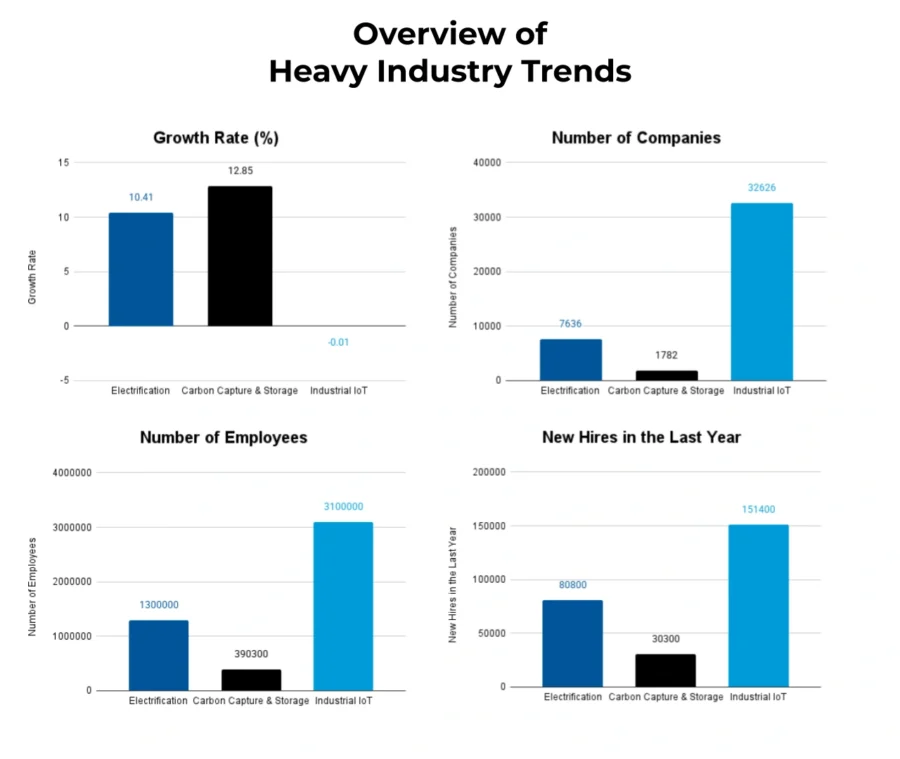
![AI in Construction: A Strategic Guide for Industry Leaders [2025-2030]](https://www.startus-insights.com/wp-content/uploads/2025/04/AI-in-Construction-SharedImg-StartUs-Insights-noresize-420x236.webp)



